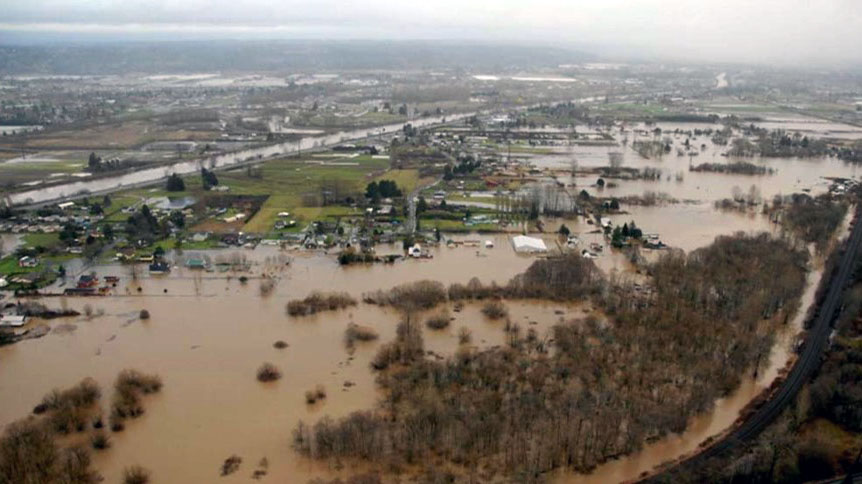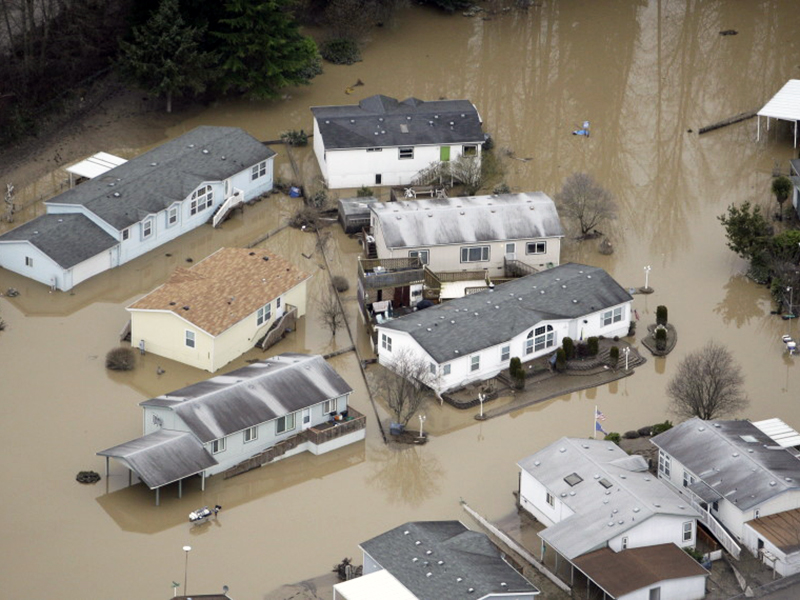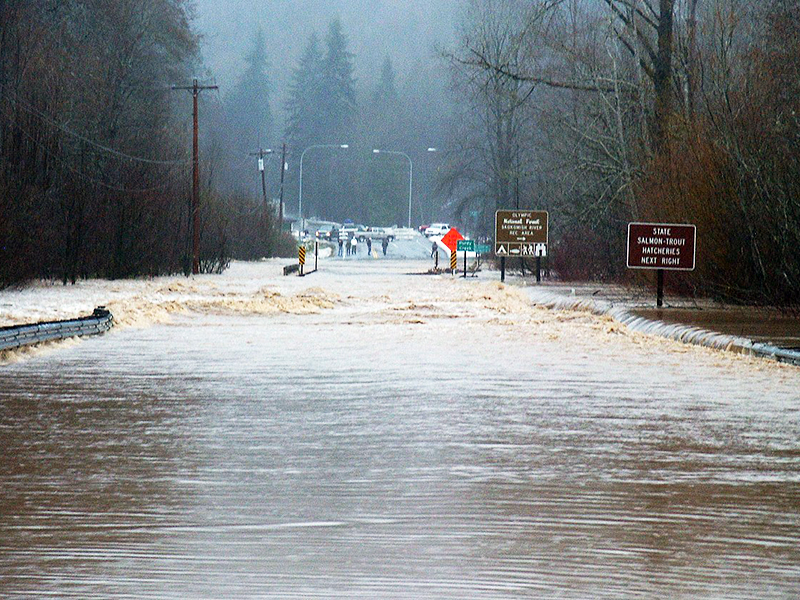Planning for flood hazards
Climate change and flooding
Air & ClimateWe work to enhance Washington’s resilience to natural hazards in state coastal and shoreline areas. Across the state, the costs of flooding exceed all other natural disasters. In any given year, there is a better than an 80% chance that 10 or more floods will occur. We are responding to and preparing for more floods as climate change intensifies the risk of flooding.
Flood impacts in Washington
Increased temperatures driven by climate change are influencing variables that contribute to flooding. Storm surges, sudden snowmelt, and atmospheric rivers can exacerbate flooding.
In the United States:
- Inland floods are occurring more often.
- Flooding in coastal areas has doubled in the past 30 years.
The adverse effects of flooding include:
- Loss of human life
- Property and infrastructure damage
- Road closures, erosion, and landslide risks
- Crop destruction and livestock loss
- Threats to salmon and other aquatic species
- Health risks due to water contamination
- Housing displacement
- Economic impacts
Lessons learned
Through shared knowledge, communities look to include sea level rise in their Shoreline Masters Programs and other planning documents. Read our report.
What we're doing to help
County governments across the state are responding to flooding when it occurs. During a flood, local and tribal governments are relyining on assistance from our Washington Conservation Corps (WCC) to help clear debris, operate pumps, fill and stack sandbags, and support other local response efforts.
We're working in partnership with local and Tribal governments to plan for, mitigate, and recover from flooding by providing technical assistance and grants to help communities better plan within a floodplain. These efforts help:
- Reduce life and property losses
- Protect and restore natural floodplain functions
- Decrease erosion
- Keep water clean
- Restore and maintain habitat for salmon and other fish and wildlife species
Related links
Contact information
Curt Hart
Communications Manager
curt.hart@ecy.wa.gov
564-250-2126






